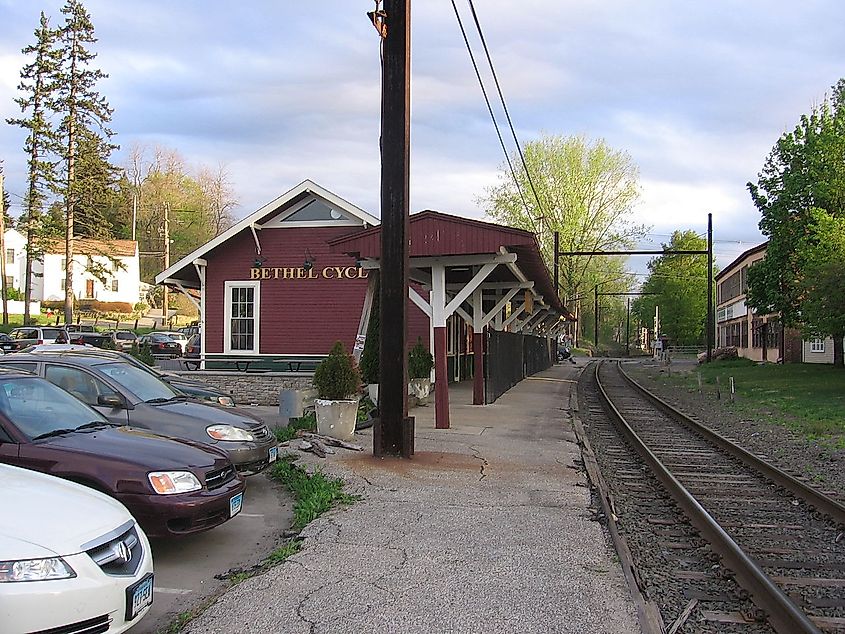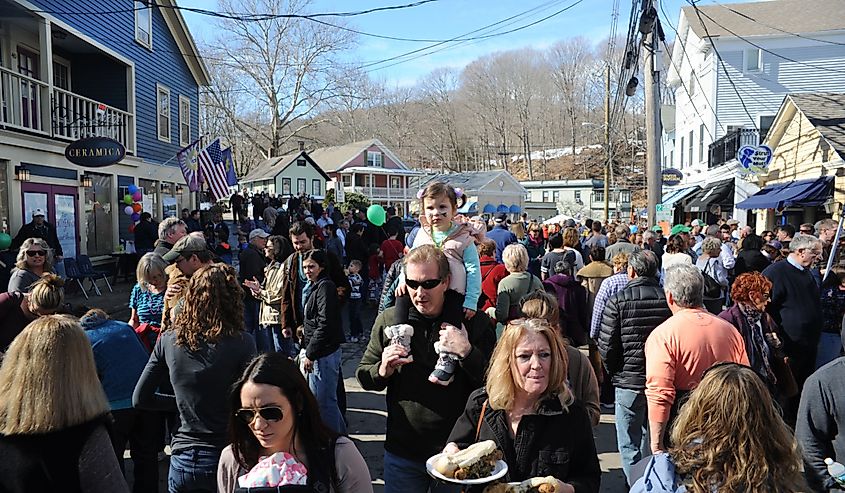
These Small Towns in Connecticut Have the Best Historic Districts
The Nutmeg State is home to hundreds of years of history. Connecticut’s history has married the present, resulting in the most spellbinding historic districts in the nation. Depart to lands of wonder in a trip through the centuries. Stroll through streets where mountain laurels bloom in the summer and peaceful quiet descends with the snow in the winter. Enjoy a jaunt in the land of the Mohegan, the Pequot, and the Niantic. The best historic districts in the magical fifth state wait to amaze.
Colebrook

The Samuel Rockwell House on Colebrook's Colebrook Road dates back to the 1790s and remains the oldest structure in one of Connecticut's most elegant time capsule towns. Colebrook has upgraded the Beech Hill area, while keeping pristine a residence completed in 1782 by John Stillman. The town lies a stone's throw south of the state's border with Massachusetts and is just west of the Algonquin State Forest and the Charles Arnold Recreation Area.
Music lovers find bliss at the Infinity Music Hall just ten minutes outside of town in Norfolk. Local history buffs upgraded the music hall, which completed in 1883, to accommodate 300 comfortable seats and optimize acoustics. Trail runners who find themselves outside Norbrook Farm Brewery warm themselves with a pint of Ol’ Man McMullen’s Porter.
Washington

Find solace at Washington’s renowned Mayflower Inn and Spa. The Mayflower building was once the Ridge School, built in 1894. Plan a trip around visiting yoga masters who come to the Mayflower to share their wellness expertise. Convene with America’s history in one of Washington’s three Historic Districts. The Washington Green Historic District and Sunny Ridge Historic District are within walking distance of each other.
Check ahead for the conditions of the Calhoun–Ives Historic District, as it can sometimes be affected by storms and flooding of the Shepaug River. Do not leave town without visiting the museum at the Institute for American Indian Studies.
Mystic

Drive across the Mystic Drawbridge into a wonderland of historic churches, landmarks, and residences that once upon a time belonged to sea captains. Mystic is well known for its stewardship of historic architecture. What is officially known as the Mystic River Historic District has been on the National Register of Historic Places since 1979. Peruse elegant streets lined with over 250 houses built in Italianate, Greek Revival, and Queen Anne architectural styles. Grab a slice from the original Mystic Pizza restaurant that inspired screenwriter Amy Jones to write the 1988 film.
Bethel

Settlers laid out Bethel sometime around 1700. Travelers fall in love with the town once they hit the Greenwood Avenue Historic District, from PT Barnum Square down to Depot Place, filled with restaurants, pubs, and shops that cannot be found elsewhere. It may be necessary to devise a schedule to avoid staying all day in shops such as Noteworthy Chocolates. Surprise a loved one with custom, laser-engraved chocolates.
Officials nominated and added the Bethel Opera House to the National Register of Historic Places in 1999. No one agrees when the former vaudeville stopping place was built. Most records guestimate 1860, while other historians suggest its completion could go as far back as the 1840s.
Essex

All aboard the Essex Steam Train. The super-scenic conveyance is operated by the Valley Railroad Company. The same company runs a riverboat cruise up the Connecticut River from which one can gaze upon the town’s striking Historic District. Book a Valentine’s Day dinner train ride while supplies last.
While local historians have been preserving it for some time, the Historic District was nominated for listing on the National Register of Historic Places in 1978. Essex was once considered part of greater Saybrook, operating as the Potapaug Quarter. Essex became a town in 1852, finally donning its name in 1854.
Monroe

Even seasoned golfers love to sneak away from the links at the Whitney Farms Golf Club and take some time to get lost in the Monroe Center Historic District. Gaze in awe at structures dating back as far as 1762. Take in the sight of Saint Peter’s Grace Episcopal Church located in the Town Hall Green District. Saint Peter’s is a Federal-style church that has served the spiritual needs of Monroe since 1802.
A popular spot to enjoy a breathtaking view from an overlook is Webb Mountain Park. Get creative at Board and Brush, a DIY wooden sign workshop where one can create the sign of their dreams.
Chester

No one can resist gawping at Liberty Street’s crown jewel, the Chester Meeting House, built in 1793. The meeting house used to be known as the Old Town Hall and hosted many historically famous traveling acts, such as Tom Thumb. Continue along to Maple Street where Isaac Buck House, completed in 1755, awaits. The original structure conformed to typical colonial structures at the time but has over the years accumulated traits of Federal and Greek Revival-style ornamentation on its edifice.
For information on all of Chester’s treasures, consult the Chester Historical Society’s website. Do not skip town without sampling a pint of Burning Down the House smoked lager from the Little House Brewing Company.
Connecticut was home to many thriving communities before the arrival of Europeans. What the English referred to as the Pequot War was a three-year act of vicious colonialism. One early morning in 1637, soldiers led by a figure now known as Mercenary John Mason. He led a raid that resulted in the deaths of over 500 people, including many women and children, being burned alive. Today, the event is known as either the Pequot Massacre or the Mystic Massacre. Consider taking action to reconcile for such acts by supporting Native American owned businesses whenever possible.







